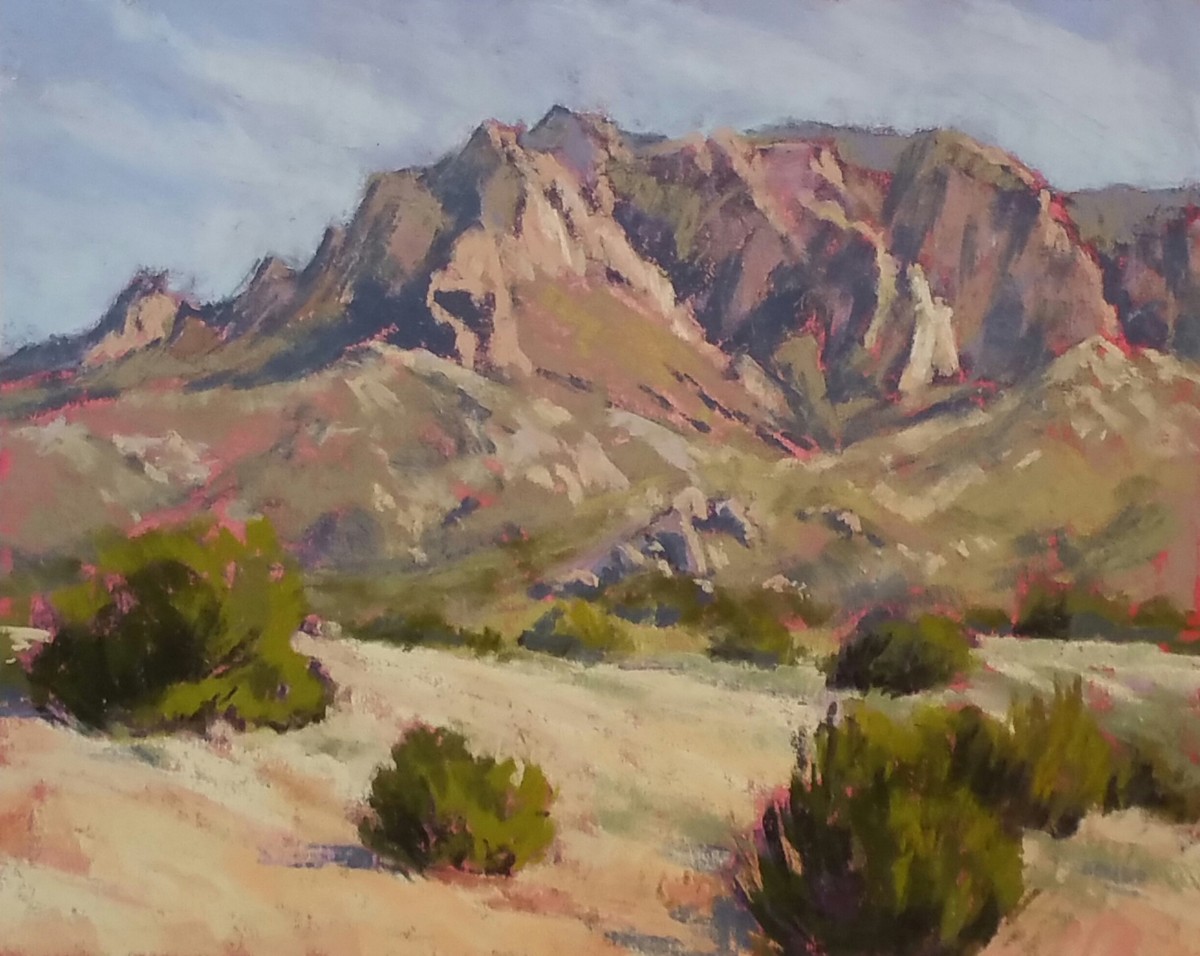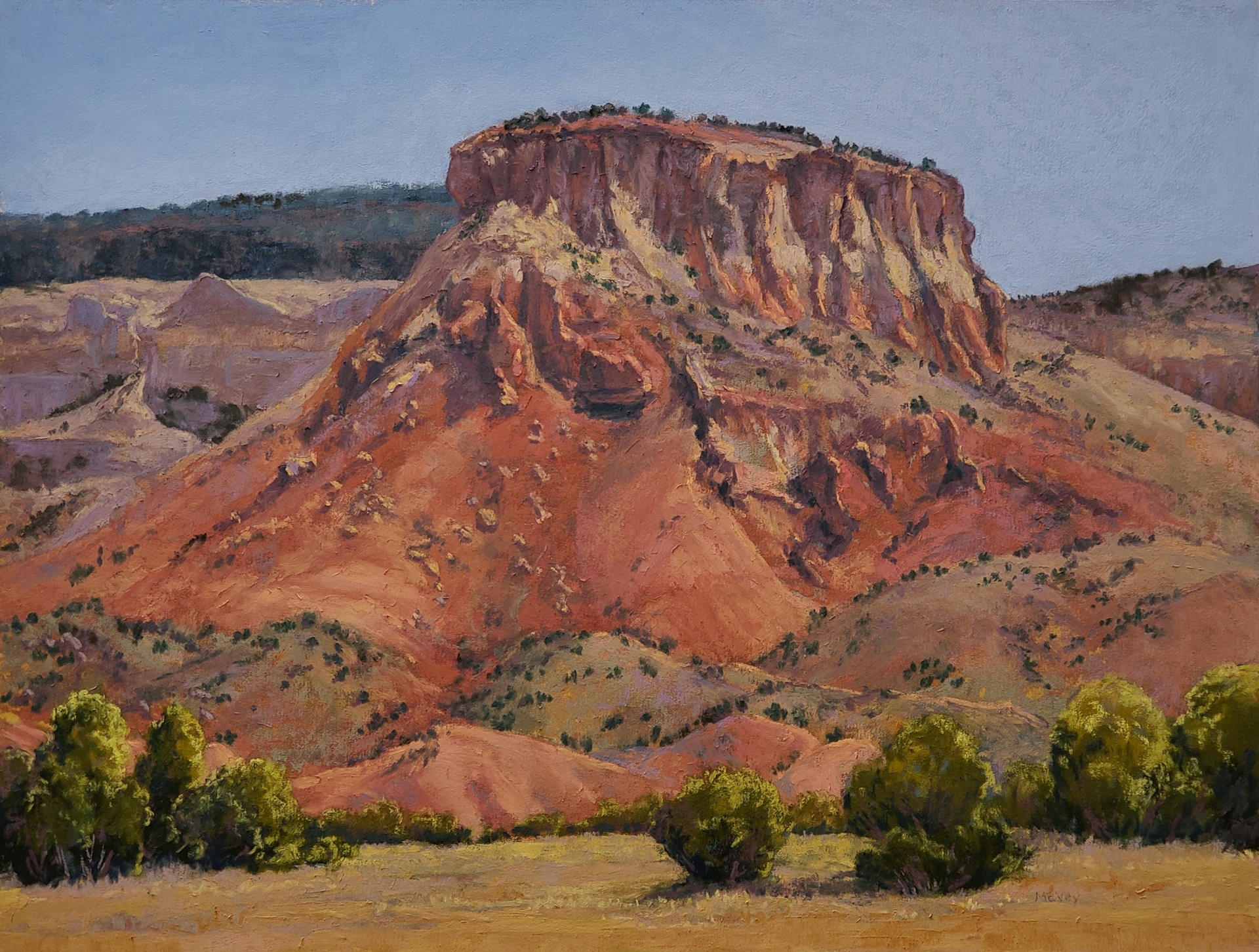We were lucky to catch up with Lee McVey recently and have shared our conversation below.
Lee, appreciate you joining us today. We’d love to hear about a project that you’ve worked on that’s meant a lot to you.
A recent project very meaningful to me was participating in “Painted Stories of Abiquiu,” a 5 person show at Abiquiu Inn Gallery (Abiquiu, NM) in September-October 2022.
We are a group of 5 artists who joined together as “Milagro Painters” to support each other in marketing and reaching our goals. We are all professional serious artists. We choose “milagro” in our name because in Spanish it means “miracle or surprise” and people often use milagro trinkets as symbols to wish others good luck, hope for the future and good health. This seemed fitting with our goals as a group. We also remembered years ago, the movie “Milagro Beanfield Wars” was filmed here in New Mexico.
I had 20 paintings, either in oil or in pastel, in the show. We choose the painted stories theme because we all would be able to create paintings of northern New Mexico and the area around Abiquiu, where artist Georgia O’Keeffe had lived. I had a few paintings appropriate for the show already completed. But I needed to create many more for the show space allotted to me.
The Abiquiu area is one of my favorite areas to depict in my landscape paintings. I worked hard during June and July to complete the paintings and then framed them during August in time for delivery and hanging day.



As always, we appreciate you sharing your insights and we’ve got a few more questions for you, but before we get to all of that can you take a minute to introduce yourself and give our readers some of your back background and context?
I knew I would be an artist from the time I was very young. I still remember being five years old in kindergarten telling one of the “big girls” on the school bus that I was going to be an artist when I grew up. My parents and grandparents convinced me I needed a stable career to fall back on so I chose teaching art in public schools. This would give me a salary with benefits and a pension that didn’t mean so much at the time I was postponing being a full time artist, but now as a retired school teacher, it is invaluable and allows me to create with freedom.
I painted during my school vacations, completing graduate school during the summers and often taking intensive summer workshops at Art New England in Bennington, VT.
I retired in 2003 from a 32 year career teaching art in the schools in the central part of New York state. This was a reward well worth waiting for since I still felt very young and able to pursue my painting dreams. I moved to Albuquerque, New Mexico the following year.
New Mexico is a special state, filled with diversity both in its cultures and geology. It seemed especially well suited for a landscape artist such as myself.
I’ve been inspired by the landscape for most of my time as an artist. I have painted portraits, figures, and still lifes in the past, but painting the landscape moves me and touches me in a way other genre have not. My landscape paintings have graced gallery walls both in New York state and here in New Mexico, either in commercial galleries or as part of juried exhibitions in galleries and museums. I’ve attained master signature membership in Plein Air Painters of New Mexico, a group I helped start along with about 10 other founding artists. I’ve also achieved Master Circle status in International Association of Pastel Societies, and Signature membership in Plein Air Artists Colorado, Pastel Painters Society of Cape Cod and Distinguished Pastelist in Pastel Society of New Mexico.
My landscapes are painted with either oil or soft pastel. I find pastel to be especially conducive to plein air work, painting at the scene in the open air. Pastel paintings can be executed quickly since there is no need to mix the colors and clean up is easy, not needing to worry about wet paint getting all over things or needing to clean brushes. I leave my oil work to be done at the studio where I can be more relaxed in the time it takes to mix paint colors. My pastels are relatively small since they need glass in the frame. I can work larger in oil without needing to add the weight of the glass.



What’s the most rewarding aspect of being a creative in your experience?
There are many rewarding aspects, really, but among them are:
*The feeling of accomplishment when I succeed at creating a good painting, winning an award or having my paintings published in a magazine or book. After working hard at my art for many years, it’s a pleasure to have successes no matter how small or large.
*It’s rewarding to have someone be moved and touched by the landscapes I paint. Viewers have often told me they feel they are standing right at the scene when they are in front of my landscapes.
*When these viewers are impressed or moved enough to purchase my work and add it to their collection, it adds to my happiness in being an artist.
* When I teach classes or workshops, explaining a concept that a student found elusive and now they understand it enough that they can demonstrate evidence of that concept in their own work, I am moved to joy and sometimes even tears.
Do you think there is something that non-creatives might struggle to understand about your journey as a creative? Maybe you can shed some light?
I’m not alone among many artists in being asked by the non-creative public questions such as How long did that painting take you? It must be fun and relaxing to be an artist! How much money do you make on this painting?
Each painting is created out of the accumulated knowledge gained over the many years of being an artist. It benefits from the past successes and past failures at the easel, from all the knowledge added during classes and workshops, reading art books, or seeing paintings in museums and galleries. It isn’t just created from the time at the easel for that painting.
It can be fun and relaxing to paint, but it can also be lots of work. Edgar Degas, an Impressionist artist from the late 1800s, said (paraphrased) painting is easy when you are first starting out, but very difficult to do the more you know. I find this to be very true. When I am in the flow, painting is very meditative and might seem to happen effortlessly, but at other times, it’s a huge challenge requiring lots of thought and work.
If I sell a painting, usually only 50% of the painting’s price comes to me if the painting is shown in a gallery. Out of that percentage coming to me, there are many expenses: the cost of materials, (this can include paint, canvas, brushes or pastels and paper and framing.) the cost of delivery either driving the painting to the exhibition or shipping it there. (shipping includes purchasing the proper type of shipping box) There may be entry fees or the cost of membership in an art society to be able to enter their shows. These costs add up to be a big part of the price of the painting.
Contact Info:
- Website: www.leemcvey.com
- Facebook: facebook.com/leemcveyfineart


